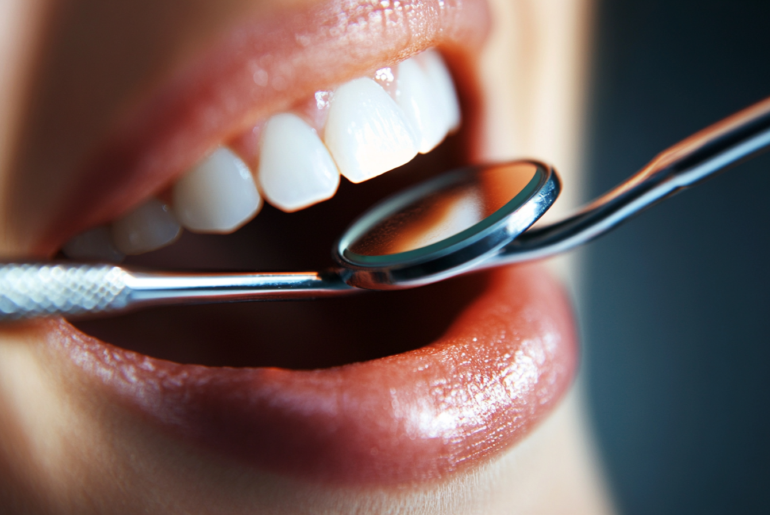This article may contain references to products or services from one or more of our advertisers or partners. We may receive compensation when you click on links to those products or services. Nonetheless, our opinions are our own.
The information presented in this article is accurate to the best of our knowledge at the time of publication. However, information is subject to change, and no guarantees are made about the continued accuracy or completeness of this content after its publication date.
Many people limit the cost of dental care to the bill they receive after a checkup or procedure. However, a more profound look reveals that the true cost of maintaining oral health extends far beyond these immediate expenses. It encompasses the value of preventive care, the strategic use of insurance coverage, and the smart exploration of alternative clinics. By knowing these often-overlooked aspects, individuals can make more informed decisions, mitigate long-term financial burdens, and ultimately ensure a healthier smile. We will guide you through the complexities associated with dental expenses, offering insights and strategies to help you manage your oral health effectively and affordably.
- Understanding the True Cost of Dental Care
- Exploring Preventive Measures for Long-Term Savings
- Finding Affordable Dental Insurance Options
- Uncovering Community Resources for Reduced Fees
- Medicare, Medicaid, CHIP
- Maximizing Your Benefits: A Guide to Dental Plans
- Tips for Maintaining Oral Health on a Budget
- Dental Savings Plans
- Conclusion
- Frequently Asked Questions
- What is the great secret to cheap dental care?
- How can I practice preventive care at home?
- What are some affordable options for dental insurance?
- Are there ways to negotiate prices with dental providers?
- What community resources are available for dental care?
- How often should I see a dentist to save money?
- Can I find low-cost dental care if I have specific dental needs?
- What should I do if I can’t afford dental care right now?
- Free or low-cost dental care without insurance?
- Recommended Reads
Understanding the True Cost of Dental Care
When you think about dental care, it’s easy to focus solely on the price of treatments, but the true cost encompasses much more than just what you pay at the dentist’s office. Factors such as preventative care and overall health should be considered, as they play a critically important role in both immediate expenses and long-term financial well-being.
What to keep in mind
Preventative practices: Regular checkups and cleanings can prevent major issues down the line. Investing in these will save you from costly emergency procedures later.
Insurance coverage: Familiarize yourself with your dental insurance policy. Maximum coverage limits and what treatments are included can greatly impact your out-of-pocket costs.
Alternative clinics: Research community dental clinics or dental schools that offer services at reduced rates. These options can significantly ease financial strain without compromising on quality.
Additionally, keeping an eye on your own oral health habits can lead to substantial savings. A simple daily oral hygiene routine can reduce your risk of cavities and gum disease.
| Treatment | Average Cost |
|---|---|
| Routine Cleaning | $75–$200 |
| Cavity Filling | $100–$300 |
| Root Canal | $700–$1,500 |
| Crown | $800–$3,000 |
By knowing these aspects, you can make more informed decisions and craft a strategy that helps you manage your dental expenses effectively in the long run.
Exploring Preventive Measures for Long-Term Savings
When it comes to managing your dental expenses, preventive measures can be your best ally. Regular checkups and cleanings are not just suggestions; they are essential to keeping your teeth and gums in good health. By visiting your dentist at least twice a year, you can catch potential issues before they escalate, saving yourself from costly procedures down the line.
Practical strategies for daily care
Daily oral hygiene: Brush twice and floss daily to prevent cavities and gum disease.
Healthy diet: Reduce sugary snacks and drinks; opt for crunchy fruits and vegetables that promote dental health.
Fluoride use: Consider a fluoride rinse or toothpaste; fluoride strengthens tooth enamel and reduces decay.
Dental insurance: Invest in a plan that covers preventive care; it can save you significant money over time.
| Type of Care | Average Cost | Potential Savings |
|---|---|---|
| Routine Cleaning | $75 | N/A |
| Cavity Filling | $200 | Save $125 by preventing it |
| Root Canal | $1,000 | Save $925 through good habits |
By taking these proactive steps, you not only maintain your dental health but also keep more money in your pocket. Investing in your smile is just as important as investing in your future.
Finding Affordable Dental Insurance Options
When searching for budget-friendly dental insurance, it’s essential to consider a few key factors that can help you make a well-informed decision. Start by evaluating your specific dental care needs. Do you require regular checkups, cosmetic procedures, or emergency dental work? By understanding your requirements, you’ll be better equipped to choose a plan that aligns with your lifestyle and budget.
Dental insurance options to explore
Employer-sponsored plans: If you’re employed, check if your workplace offers a dental insurance plan. These are often more affordable due to group rates.
Discount dental plans: These aren’t insurance but offer reduced rates for services at participating dentists. If you need several treatments, this can save you money.
State-sponsored programs: Depending on your income and location, you might qualify for state assistance, which can significantly reduce your costs.
Health Savings Accounts (HSAs): If you’re enrolled in a high-deductible health plan, HSAs allow you to set aside pre-tax dollars for dental expenses, providing savings and tax advantages.
| Plan Type | Estimated Monthly Cost | Coverage Type |
|---|---|---|
| Employer Plan | $20–$50 | Thorough |
| Discount Plan | $10–$30 | Reduced Rates |
| State Program | Varies | Low-Income Coverage |
Take your time evaluating these alternatives. Sometimes, the cheapest option isn’t the best fit for your needs, and investing a little more in quality coverage can lead to greater satisfaction and fewer out-of-pocket expenses down the line.
Uncovering Community Resources for Reduced Fees
Finding affordable dental care can often feel like a daunting task, but many community resources can help reduce your expenses. Local health departments, non-profits, and dental schools offer programs designed specifically for individuals seeking reduced-fee options for dental services.
Helpful community resources
Community health clinics: These clinics typically offer sliding scale fees based on your income. They often provide a range of dental services and are a great starting point for affordable care.
Dental schools: Treatment performed by dental students under the supervision of experienced faculty can be much cheaper. While these services might take longer, the savings can be substantial.
Non-profit organizations: Look for local or national non-profits that help underinsured or low-income families access dental care at reduced rates. Programs like these often collaborate with local dentists.
| Resource Type | Location | Contact Info |
|---|---|---|
| Community Health Clinic | Local area | (123) 456-7890 |
| Dental School | City University | (987) 654-3210 |
| Nonprofit Organization | National Reach | info@nonprofit.org |
By taking the time to uncover these resources, you can make a significant impact on your dental health without compromising your budget.
Voted "Best Overall Budgeting App" by Forbes and WSJ
Monarch Money helps you budget, track spending, set goals, and plan your financial future—all in one app.
Get 50% OFF your first year with code MONARCHVIP
Medicare, Medicaid, CHIP
Affordable dental care options can also be found through public programs. Community health clinics offer sliding scale fees based on income. Dental schools provide lower-cost treatments under faculty supervision. Non-profit organizations help underinsured or low-income families access care at reduced rates by collaborating with local providers. These programs ensure that essential services remain accessible to those in need.
Maximizing Your Benefits: A Guide to Dental Plans
When it comes to taking full advantage of your dental plan, understanding the fine print can truly make a difference. Maximize your benefits by doing your homework. Start by reviewing your plan carefully, paying close attention to what is covered. Many policies offer preventive care at little to no cost, such as routine check-ups and cleanings. Additionally, understand your annual maximum and deductible amounts to help you budget effectively.
Tips to make the most of your coverage
Utilize preventive services: Schedule regular visits to catch issues early.
Know your coverage limits: Be aware of the maximum benefits and deductibles.
Look for in-network providers: These typically offer better rates.
Keep an eye on waiting periods: Some plans require a certain period before you can access specific services.
| Service | Coverage Type | Cost Estimate |
|---|---|---|
| Cleanings | Preventive | Free (Insurance covers 100%) |
| Fillings | Basic | $50–$150 (depends on plan) |
| Crowns | Major | $500–$1,500 (after deductible) |
Don’t hesitate to ask your dentist for help managing the costs. They can often work with you to break down treatments into manageable steps aligned with your benefits.
Tips for Maintaining Oral Health on a Budget
Keeping your smile luminous doesn’t have to break the bank. Here are some simple yet effective strategies to take care of your oral health affordably.
Smart strategies for savings
Brush smartly: Invest in a good-quality toothbrush. A simple manual brush used correctly is effective. Brush for two minutes, twice a day.
DIY dental care: Rinse with a solution of warm water and salt or baking soda to fight bad breath and gum issues—but don’t overuse these methods.
Nutrition matters: Incorporate teeth-friendly foods like crunchy fruits and vegetables. Strawberries, apples, and carrots help scrub teeth and provide vitamins.
Water is your friend: Drinking water after meals helps wash away food particles and neutralizes acids. Use a reusable bottle to save on drinks.
| Expense | Estimated Monthly Cost | Savings from Prevention |
|---|---|---|
| Routine Checkup | $10 | $200+ |
| Toothpaste and Mouthwash | $5 | $50+ |
By integrating these practices into your routine, you’ll maintain oral health while staying within budget.
Dental Savings Plans
Consider enrolling in a dental savings plan for discounted rates on various procedures, including cleanings, fillings, and even major treatments like root canals or crowns. These plans help you save significantly on out-of-pocket expenses while ensuring regular dental care. Research different options to find one that suits your needs and budget. Being proactive can help you prioritize dental care without breaking the bank.
Conclusion
Taking charge of your dental health and the costs that come with it is a proactive step toward better health in general. You can greatly lower the chances of needing expensive procedures in the future by taking preventive steps like getting regular check-ups and keeping up with your daily hygiene. Knowing what your dental insurance covers and looking into community resources will help you get good care at a price you can afford. A healthy smile isn’t just about how it looks; it’s also good for your long-term health and financial stability. You can confidently handle the complicated world of dental care by following the tips in this guide. This way, you can keep your oral health a priority without going over budget.
Frequently Asked Questions
What is the great secret to cheap dental care?
The secret lies in preventive measures and utilizing community resources. Regular check-ups and cleanings catch issues early, and many communities offer low-cost or free dental clinics.
How can I practice preventive care at home?
Brush at least twice a day, floss daily, use mouthwash, and avoid sugary foods. Replace your toothbrush regularly and drink plenty of water.
What are some affordable options for dental insurance?
Consider discount dental plans, which reduce service costs without high premiums. Check with your employer—some benefits may not be widely advertised.
Are there ways to negotiate prices with dental providers?
Yes. Ask for a detailed cost breakdown and inquire about discounts for upfront or cash payments. Many offices are willing to work with you if you explain your situation.
What community resources are available for dental care?
Local health departments, non-profits, and dental schools often offer reduced-rate services. These are excellent resources for affordable care.
How often should I see a dentist to save money?
Visiting a dentist twice a year helps prevent serious issues and identifies problems early, saving you money over time.
Can I find low-cost dental care if I have specific dental needs?
Yes. Non-profit organizations and dental schools often offer specific treatments at reduced rates under supervision.
What should I do if I can’t afford dental care right now?
Prioritize hygiene, seek out community resources, and contact dental schools or clinics. Address emerging issues early before they escalate.
Free or low-cost dental care without insurance?
Yes. Community clinics, non-profits, dental schools, and local health departments offer reduced or free care. Research local options to access these services.

Reviewed and edited by Albert Fang.
See a typo or want to suggest an edit/revision to the content? Use the contact us form to provide feedback.
At FangWallet, we value editorial integrity and open collaboration in curating quality content for readers to enjoy. Much appreciated for the assist.
Did you like our article and find it insightful? We encourage sharing the article link with family and friends to benefit as well - better yet, sharing on social media. Thank you for the support! 🍉
Article Title: Cheap Dental Care: The Great Secret to Saving Big
https://fangwallet.com/2025/06/11/cheap-dental-care/The FangWallet Promise
FangWallet is an editorially independent resource - founded on breaking down challenging financial concepts for anyone to understand since 2014. While we adhere to editorial integrity, note that this post may contain references to products from our partners.
The FangWallet promise is always to have your best interest in mind and be transparent and honest about the financial picture.
Become an Insider

Subscribe to get a free daily budget planner printable to help get your money on track!
Make passive money the right way. No spam.
Editorial Disclaimer: The editorial content on this page is not provided by any of the companies mentioned. The opinions expressed here are the author's alone.
The content of this website is for informational purposes only and does not represent investment advice, or an offer or solicitation to buy or sell any security, investment, or product. Investors are encouraged to do their own due diligence, and, if necessary, consult professional advising before making any investment decisions. Investing involves a high degree of risk, and financial losses may occur including the potential loss of principal.
Source Citation References:
+ Inspo
There are no additional citations or references to note for this article at this time.












































